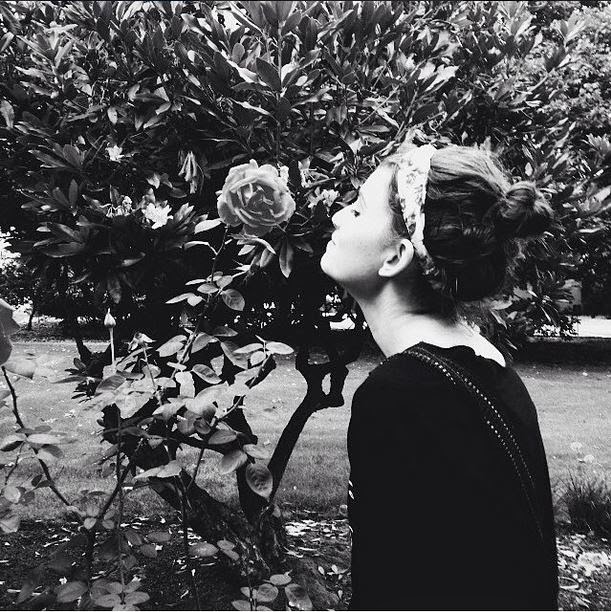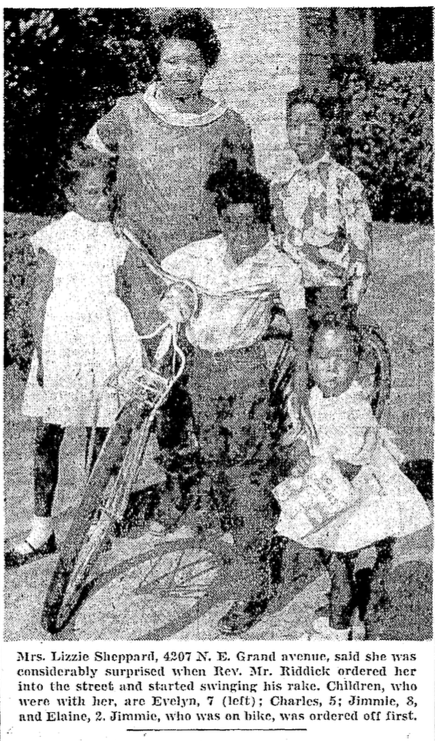by Laura Joy Griffith
Fitzgerald’s The Great Gatsby utilizes the literary techniques of paradox and
oxymoron in many instances. Keith Gandal
calls “Gatsby’s famous doubleness…a chivalrous lover and cold-blooded killer”
(qtd. in Hays 1). Perhaps Fitzgerald’s
most brilliant use of “doubleness” is in the
character of Daisy Buchanan, a woman loved and desired by many. The two key people in Fitzgerald’s novel who
want Daisy for their own are her husband, Tom Buchanan, and her beau from her
single days, Jay Gatsby. Tom and Gatsby
do not see the same Daisy, however. I
assert that Daisy’s two selves are linked to the two men in her life and her
deliberation between the two men is really a deliberation between two selves;
Daisy could have a happy, successful relationship with either Tom or Gatsby if
she killed the other self and became a unified person.
 |
Leonardo DiCaprio, Carey Mulligan, Tobey Maguire,
and Joel Edgerton in The Great Gatsby (2013) |
Daisy’s two personalities are
represented in the novel by her two hair colors. In 1972, columnist Sheilah Graham complained
that Ali McGraw could not play Daisy because McGraw had dark hair and Daisy had
blond hair (Korenman 1). Graham made the
mistake, however, of only seeing one side of Daisy. She saw only Tom’s Daisy, who is blond, and
passes on her blond hair to her daughter.
When Daisy’s daughter makes a brief appearance in Chapter VII, Daisy
mentions her “yellowy hair” (Fitzgerald 123) and then later asserts, “She looks
like me. She’s got my hair” (124). In this scene, Daisy is at home with her
daughter, who is of course Tom’s daughter, and so in this moment Daisy is
living in the self that belongs to Tom, and she is happy. This self is symbolized by blond hair
(Korenman).
In contrast, Gatsby’s Daisy is
symbolized by dark hair. In a
description of Daisy and Gatsby’s time together before he left for the Great
War and before she married Tom, Fitzgerald writes, “Now and then she moved and
he changed his arm a little and once he kissed her dark shining hair”
(Fitzgerald 157). In this scene, then,
when Daisy is living in this self, she has dark hair; she is Gatsby’s Daisy and
she is happy (Korenman).
Daisy’s two personalities, while
symbolized by light and dark hair, are also represented by East and West
Egg. East Egg is where old money is a
cause for pride and new money is a cause for disdain. It is where cool elegance and projected
innocence are the expectations of a respectable woman. It is where Tom and Daisy live, and it is
where the blond Daisy—Tom’s Daisy—is most comfortable. In contrast, West Eggers usually have new money. Gatsby lives in West Egg, and his parties are
filled with producers and actors, people climbing the social ladder. Being respectable is less important in West
Egg; Gatsby describes his guests as “interesting people…People who do
interesting things. Celebrated people”
(Fitzgerald 96). Only Daisy’s
dark-haired self is comfortable in West Egg.
When Tom and Daisy attend one of Gatsby’s parties together, Daisy is
only happy when she can get away from Tom and her blond self and live in her
other self—when she can be Gatsby’s Daisy.
Nick says he knows “that except for the half hour she’d been alone with
Gatsby she wasn’t having a good time” at Gatsby’s party in West Egg.
Daisy experiences a lot of grief
from trying to live in both selves simultaneously. When Gatsby reenters her life and demands
that she leave her husband, “go to [him] and say: ‘I never loved you’”
(Fitzgerald 116), Daisy is being pulled in two directions, and it is not just
about two men. It is about two selves.
As we have seen, Fitzgerald clearly presents Daisy as a split person and those
two Daisys—the blond Daisy and the dark Daisy—are linked to Tom and Gatsby,
respectively. As long as she only has
one man in her life, she can focus on one self.
That is why she managed to survive the years between her marriage to Tom
and the reentrance of Gatsby into her life without confusion. She could put the dark-haired, West Egg,
Gatsby’s Daisy in the past and live as the blond, East Egg, Tom’s Daisy. Likewise, at Gatsby’s party, when Tom is not
there and she is only with Gatsby, she is also happy because she is released
from the pressures of the high-class Daisy.
Fitzgerald says that when Daisy
decided to marry Tom instead of waiting for Gatsby to return “there was a
certain struggle and a certain relief” (159); the struggle was between her two
selves—the one who would wait for Gatsby and the one who would do what was
expected of her and get married to this well-off gentleman—and the relief came
when she chose one and followed it. The
struggle Daisy experienced is dramatically expressed in Jordan’s story of the day
before Daisy’s wedding. Daisy gets drunk
and, clinging to Gatsby’s letter in which he promised to return for her, tells
them she has changed her mind. “She
groped around in a waste-basket she had with her on the bed and pulled out the
string of pearls [Tom had given her]. ‘Take ‘em downstairs and give ‘em back to
whover they belong to,’” (81). But when
the women sober her up and force her to behave, she rejects Gatsby’s Daisy and
lives as Tom’s Daisy for years—until Gatsby comes back.
Then Daisy is faced once again with
a battle between her selves. On the day
when it is exceedingly hot and they all go into town, Gatsby keeps trying to
force her to make some sort of a decision.
He assumes that she chooses him—that she chooses the dark-haired Daisy. To him, it is all about who she loves, but for
Daisy, it is about who she wants to be for the rest of her life; she is not
ready to make the decision just yet, so she keeps trying to change the subject
and keep everyone happy (Fitzgerald 120-143).
Daisy is still sitting on that fence when tragedy strikes and the
decision is made for her. When Gatsby is
killed, his Daisy dies with him. With no
Gatsby, she has no reason to be the dark-haired Daisy he loved. She fully becomes Tom’s Daisy, then, and was
finally unified for the first time since Tom had entered her life and demanded
that she be someone other than the girl she was to Gatsby.
The direction Daisy ultimately goes
explains why Sheilah Graham in 1972 claimed that Daisy is blond. Graham is not alone. Joan S. Korenman writes, “What is curious is
that, although the dark and fair descriptions seem fairly well balanced, most
readers come away from the novel convinced like Sheilah Graham that Daisy is
blonde” (3). Daisy is portrayed in all
four main film adaptations of The Great
Gatsby (1949, 1974, 2000, and 2013) with blond hair (IMDb). Korenman claims that
this is because the descriptions of Daisy are accompanied by imagery which is
linked to blond hair: Daisy is constantly surrounded by gold and white; Gatsby
says her voice sounds like money, which is connected with gold (3). I would add that readers remember Daisy as
blond because the blond Daisy is the Daisy we are introduced to at the
beginning of the novel (before she reencounters Gatsby) and the Daisy we are
left with at the end (after Gatsby’s death).
The Great Gatsby begins and
ends with Tom’s Daisy.
Korenman
claims that Daisy is “both cool innocent princess and sensual
femme fatale, a combination that further
enhances Daisy’s enigmatic charm” (5).
Daisy could be either of these selves—indeed, through most of the book,
she is both of them. Living on a knife
edge, Daisy’s life was one of constant confusion, deliberation, and
struggle. Because each self was
connected to a man, however, it was not simple for Daisy to choose one and live
in it. Torn between the blond,
high-class, respectable wife Tom wanted her to be and the dark, sensual,
interesting woman Gatsby wanted her to be, Daisy was on the verge of ripping in
half until an unexpected turn of events forced her to become one and not the
other. Ultimately becoming Tom’s Daisy
and rejecting Gatsby’s Daisy—rejecting West Egg along with it—Daisy Buchanan
achieves the oneness she needed all along.
Works Cited
Fitzgerald, F. Scott. The Great Gatsby. New York: Collier,
1992. Print.
Hays, Peter L.
"Oxymoron In The Great Gatsby." Papers
On Language & Literature 47.3 (2011): 318-325. Academic Search Premier. Web. 6 Apr. 2013.
IMDb.
IMDb.com, n.d. Web. 06 Apr. 2013.
Korenman, Joan S.
"'Only Her Hairdresser …': Another Look At Daisy Buchanan." American Literature: A Journal Of Literary
History, Criticism, And Bibliography 46.4 (1975): 574-578. MLA International Bibliography. Web. 2
Apr. 2013.
 Hello Blog Readers! This is poem I wrote a couple months ago, but it seemed good to share now that fall in the air. It is a sestina in form, meaning the repeating end words of the stanzas provide the rhythm and form.
Hello Blog Readers! This is poem I wrote a couple months ago, but it seemed good to share now that fall in the air. It is a sestina in form, meaning the repeating end words of the stanzas provide the rhythm and form.






























